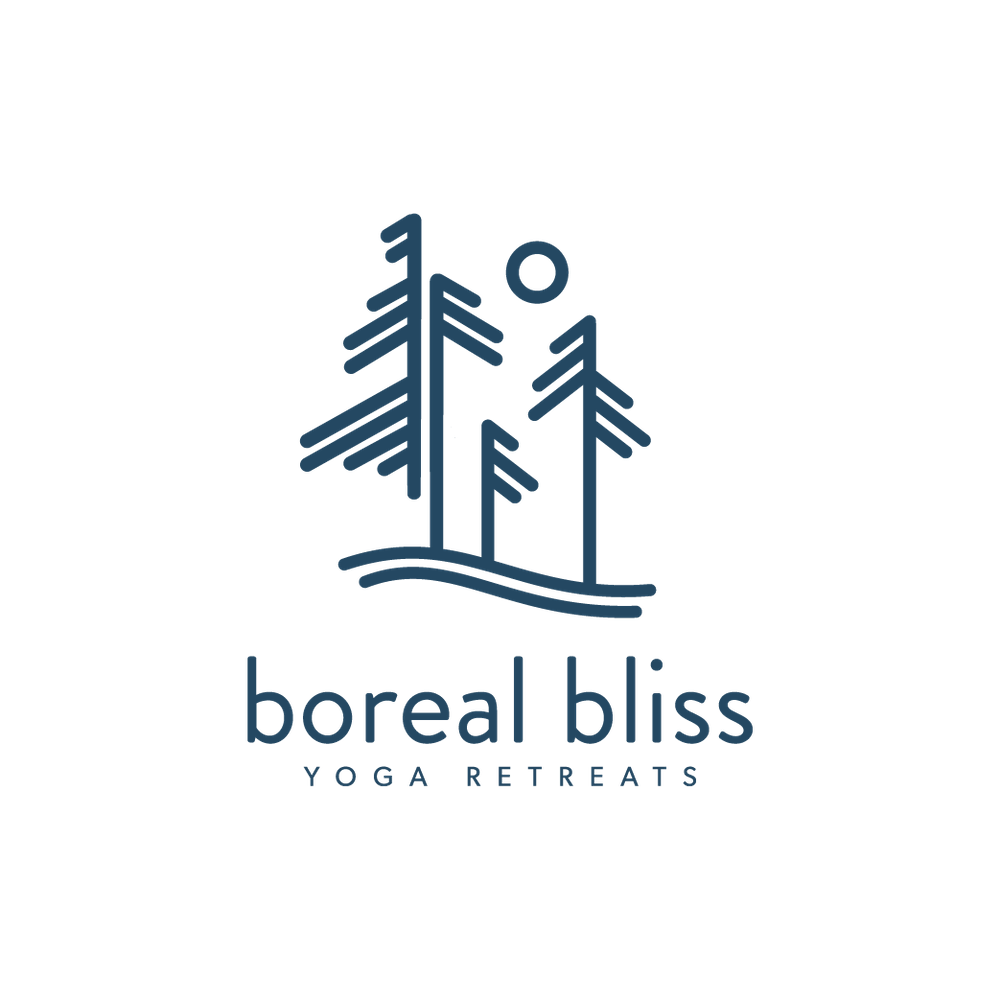Yoga and Your Pelvic Floor Muscles
Whispering Willow Photography
The pelvis is the center of your body. It connects your upper and lower half. Care and focus of the pelvis is vital to overall health and wellbeing. It’s movements and abilities are a staple in every single yoga posture, as well as in everyday life. Within the bone structure of the pelvis, you have your pelvic floor muscles (PFM), and vital organs as well.
**FYI this blog and practice applies to men too!
Kegels
“Do your kegels!” - a phrase uttered by many a well-meaning helping professional, friend, family member, and/or advice column. The concept and practice spread like wildfire years ago. The popularity of conveniently being able to do them “anytime, anywhere” led to even more interest. For some reason, the phrase “do your kegels” led everyone, everywhere to believe that they have a weak pelvic floor. “That’s why I have incontinence (unable to “hold it”), and/or why I make frequent visits to the bathroom, right?” The answer is MAYBE.
It might be that you have a weak pelvic floor, and it might actually be that you have an overly tight/overworked pelvic floor…. Or both. Kegels, believe it or not, are not for everyone and most likely if you’re doing kegels, you’re doing it incorrectly. Yes, you heard me - you’re probably doing it wrong.
But before we learn HOW to do something, we must first learn the WHY. What exactly is going on with your unique anatomy?
Important note: the best way to truly find out about your needs is to consult with your doctor. Even better - they may make a referral for you to see a Pelvic Floor Physical Therapist/Specialist!
Different types of issues with the pelvic floor muscles (PFM):
Hypertonic: overly tense
Hypotonic: overly relaxed
Both: one can have both an overly tight and overly relaxed PFM in different areas of the rather large area of muscles that make up the pelvic floor.
Wow. Really?
Yep. In fact, many of us actually have hypertonic (overly tense) pelvic floor muscles. We live in a fast-paced, stress-celebrating society. Why wouldn’t our pelvic floor be affected by our habits of stress, busyness, go-go-go, poor posture, sitting for too long, lack of vacations, history of trauma, and more? Therefore, if your PFM are overly tense, we wouldn’t want to continue to tighten them with an exercise like kegels.
I can’t believe kegels aren’t for everyone.
I HEAR YOU! The first time I heard this I was shocked. I was also 4 months pregnant. My doctor, my friends, even the pregnancy apps on my phone were telling me to “do my daily kegels”.
However, after research, study, and self-inquiry, it makes so much sense to me that there is not a “one-exercise fits all” approach when it comes to caring for one’s pelvic floor. It depends entirely on where you are starting out (hyper or hypo tonic) and what the symptoms and circumstances concerning your PFM are.
What do you mean I’m probably doing it wrong?
The most common instructions for kegels is to imitate that you are stopping the flow of urine. However, the pelvic floor muscles incorporate so much more area than the small area you urinate from! Also, when describing kegels, there are typically not adequate instructions given for equally relaxing, opening, and stretching the PFM.
More on this to come. Keep reading. :)
Loon Lake Portraits
Pregnancy
If I’m expected to push a human baby through my nether regions, why in the world would I want it to be super tight and constricted? Granted, gaining weight, and carrying another human, through pregnancy does take a toll on the downward pressure of the PFM, thus often creating a relaxed and strained muscle…maybe. Just like any muscle, it is beneficial to be strong, especially for child birth. However, in the words of Lyndi Rivers, C-IAYT specializing in pelvic floor yoga therapy: “tight muscles are not strong muscles, tight muscles are weak muscles.” It’s common sense, and we know this from every other muscle in the body. We need flexibility in order to access our strength.
Whispering Willow Photography
Mula Bandha and teaching yoga
In some yoga practices/lineages/certain teachers, it’s encouraged to tighten/hold/engage your pelvic floor muscles (mula bandha) for much of a yoga practice. Even if that’s not what you have been taught/are teaching - are you also practicing and teaching students how to properly relax their pelvic floor muscles? If not, why? Would you flex your bicep for hour(s) on end and not relax it? Would you teach a yoga asana class that was only strength-based with no focus on flexibility and relaxation? How about tense your shoulders up to your ears without dropping them down to soften? No. That would be painful and harmful. Okay, well why in the world would you even consider doing such a thing to your pelvic floor muscles then? Exactly…..don’t! It is a disservice to ourselves and others to not be teaching, and practicing, relaxing the PFM.
How do I teach that? First, practice it for yourself. More to come…
Whispering Willow Photography
Flexibility AND Strength Practice
We need flexibility as much as we need strength. In our fast-paced society, we typically find that many are suffering from a lot of tension. We usually need flexibility and relaxation, especially in the pelvic floor, more than we need tension. Say “bye bye kegels!” and hello to more practical application and a combination of both relaxation and strengthening of the pelvic floor.
Relax your pelvic floor muscles: utilize breath and visualization.
The pelvic floor is the region that spans front to back from the pubic bone to the tailbone, and side-to-side from sits-bone to sits-bone. Visualize the pelvic floor muscles as a trampoline. Practice syncing your breath, and respiratory diaphragm, with your PFM. As you inhale, the belly expands with breath, causing the respiratory diaphragm to flatten downward. At the same time, your PFM muscles are relaxing and spreading down and out, ever so subtly. Visualize the trampoline pressing down toward the ground. As you exhale, the belly contracts, causing the diaphragm to float upward. At the same time, your PFM muscles are gently contracting upward. Visualize the trampoline springing back up.
Whispering Willow Photography
This is a more complete, kegel-like practice, that also incorporates a “reverse kegel” (the stretching and relaxing part to complement the strengthening). Relaxing AND strengthening. It is a gentle and subtle practice. No need to overdo it. Practice and repeat while simply sitting, with good posture, and/or lying down, perhaps with knees bent. Deep and synchronized breathing is key. This is a practice of self-study and understanding. Once you understand the practice while you’re still, then you can also begin to practice with gentle asana (yoga postures) as well.
Whispering Willow Photography
Build strength in, and around, your pelvic floor muscles.
Once you’ve gotten the hang of synchronizing breath with the relaxing and strengthening of the PFM, then you can also incorporate pelvic floor focused yoga postures. Think about what poses stabilize, strengthen, and increase helpful flexibility around the lower half of your body: core, gluts, adductors/abductors, ...just to name a few. A few examples of strengthening yoga postures are: bridge, chair, and warriors. Some examples of flexibility of the PF area with yoga postures are: (supine) pigeon, pelvic tilts, (supine) butterfly, and yogi squat/horse pose.










HOLD IT! Yes, your pee. And keep well-hydrated.
This is my favorite daily strengthening practice for the PFM. Did you know that your stream of urine should last at least 10 seconds in duration and maintain a steady flow? If you are “going” for less than 10 seconds… you did not really have to go.
This was MIND-BLOWING to me. Especially during pregnancy when everyone talks about having to pee all the time. I believe all that talk and expectation truly gets in your head, and ultimately sends the wrong signals to your body.
You want to build strength and stamina in the bladder and surrounding PFM by waiting until your stream is lasting 10 seconds or more. The more you practice, the more you improve - aka the longer you can hold it during the day AND at night.
When you are urinating, practice sitting up tall with a slight tilt forward, and fully relax the PFM (and your jaw & shoulders!) as you go in order to completely empty the bladder all at once. None of that stopping mid-stream business.
You also want to stay well-hydrated so your body understands the feeling of a full bladder. And drinking water is good for you, of course. (hint: increase water during the day, and limit your intake at least 2 hours before bed).
I love this awareness practice of 10 seconds or more because I notice results fairly quickly - within a few days typically. It’s also great because it’s something that you can really focus on for a few days and feel successful, and then a few weeks/months later if you notice a decline you can become more aware of the practice and get things into shape again! It’s been a life saver in pregnancy for me. Many women talk about waking up to go to the bathroom 5-6+ times a night near the end of pregnancy. I RARELY have experienced that phenomenon (thank goodness), as I sit here typing at 39 weeks pregnant. For most of my pregnancy I was up just once in the night to use the bathroom. Near the end of pregnancy, two trips became normal, and now these last couple weeks 2-4 is normal for me. I’m so glad it’s not more. If you are/have been pregnant you know how uncomfortable/painful it can be to roll yourself out of bed near the end!
Author Leslie Howard speaks more in depth on this, and many other helpful practices, in her amazing book: Pelvic Liberation: Using Yoga, Self-Inquiry, and Breath Awareness for Pelvic Health.
Yoga Postures and your pfm
Of course there are postures, sequences, flows, and more that can incorporate and focus on both strengthening and increasing flexibility in the pelvic floor. As with any practice, build awareness through practice and study it for yourself. Learn what works for you, and what doesn’t. Get familiar with your pelvic floor muscles: hyper or hypo? Talk to your doctor if you experience incontinence, pain, discomfort, etc. There is a solution, and pelvic floor physical therapy can help! Practice breathing with the trampoline visual, or another visual of your choosing. Experiment with poses and inquire with yourself about how the mechanics of each work.
Whispering Willow Photography
Resources:
Pelvic Liberation: Using Yoga, Self-Inquiry, and Breath Awareness for Pelvic Health by Leslie Howard
lyndirivers.com: Lyndi Rivers, C-IAYT Pelvic Floor Yoga Therapy Specialist
Author:
Bryana Cook, MSW, LICSW, E-RYT 200, RYT 500, is currently in the 800 hour C-IAYT Inner Peace Yoga Therapy program. She is a practicing mental health professional in a small rural Minnesota counseling office. Bryana teaches group yoga classes and schedules private sessions, through her nomad business Northern Namaste Yoga and co-leads yoga retreats in beautiful places with her partners in Boreal Bliss Yoga Retreats. She lives in Longville, MN with her husband, dog, and cat, where they do their best to live an intentional life of simplicity in nature.







